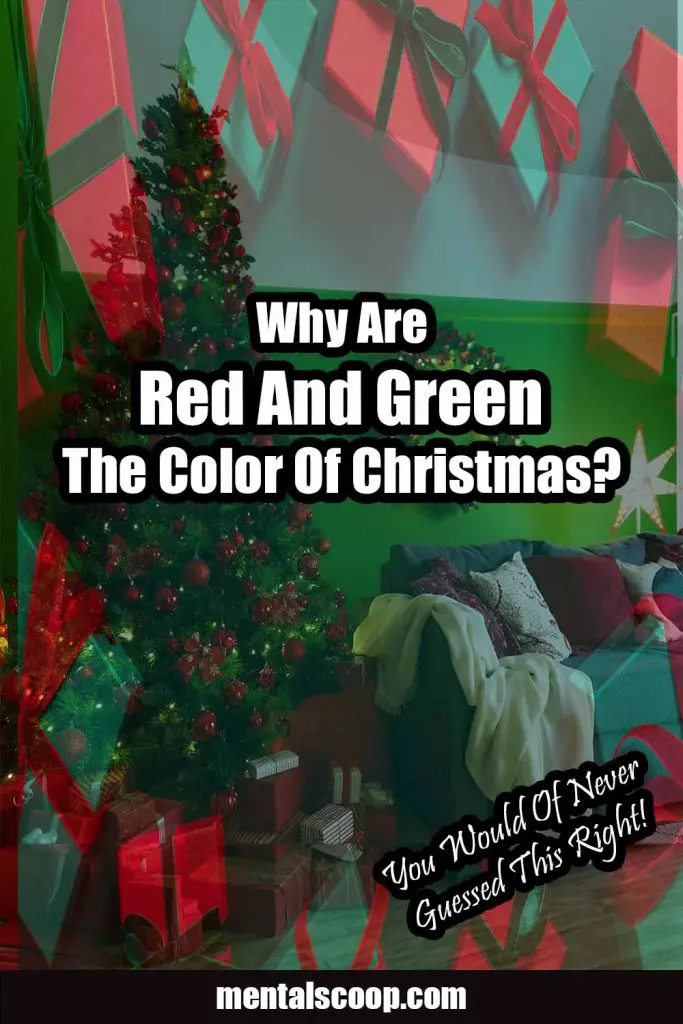Why Are Red And Green The Color Of Christmas?

As the winter chill descends and the air fills with the tantalizing aroma of cinnamon and pine, our surroundings transform into a festive kaleidoscope of red and green. These two colors, intertwined like ribbons on a beautifully adorned Christmas tree, have become synonymous with the holiday season.
But have you ever wondered why red and green are the chosen hues to represent the most wonderful time of the year? Let’s unravel the rich tapestry of history, symbolism, and tradition that has woven these colors into the very fabric of Christmas.
Historical Roots
To understand the origins of red and green as Christmas colors, we must journey back through the annals of history to various cultural and religious traditions. The earliest recorded use of green during the winter season can be traced to ancient pagan celebrations that honored the evergreen plants, symbolizing life and resilience amidst the harsh winter.
Romans, for instance, celebrated Saturnalia by adorning their homes with evergreen boughs. Red, on the other hand, has deeper religious connotations. In Christian traditions, red has long been associated with the story of Christmas.
The vibrant hue represents the blood of Christ, shedding light on the religious significance of the holiday. Over time, these ancient pagan and Christian elements intertwined, creating a harmonious palette that would eventually dominate Christmas festivities.
Religious Symbolism:
The Christian celebration of Christmas, commemorating the birth of Jesus Christ, has played a pivotal role in shaping the color symbolism of the season. The red and green color scheme aligns with various elements of the nativity story. The red represents the blood of Christ, symbolizing sacrifice and redemption, while green symbolizes eternal life and the hope brought by the birth of Jesus.
In medieval mystery plays, which were popular theatrical productions depicting biblical events, the use of red and green became more pronounced. The actors often wore costumes in these colors to visually reinforce the religious messages conveyed through the plays. This theatrical tradition further solidified the association of red and green with the Christmas story.
Victorian Influence
The 19th-century Victorian era played a pivotal role in shaping the modern Christmas aesthetic. Queen Victoria and Prince Albert, with their iconic Christmas tree adorned with candles, ornaments, and evergreen branches, set a trend that quickly spread across Europe and North America.
The vivid red and green decorations used during the Victorian era laid the foundation for the color scheme we recognize today.
Commercialization and Pop Culture
As the 20th century unfolded, the commercialization of Christmas gained momentum. Advertisers, department stores, and pop culture further propagated the red and green color scheme. Santa Claus, with his rosy red suit and evergreen holly, became an enduring symbol of Christmas. The iconic Coca-Cola advertisements featuring Santa in the 1930s solidified the image of a jolly, red-suited gift-giver.
In the mid-20th century, with the rise of mass-produced Christmas decorations and the popularization of artificial Christmas trees, the red and green color scheme became more accessible to the general public.
Families across the globe began decorating their homes with red baubles, green garlands, and festive red stockings, cementing these colors as a visual representation of holiday joy.
Cultural Variations
While red and green dominate Christmas traditions in Western cultures, it’s essential to acknowledge that different cultures around the world celebrate the season with unique color palettes.
In some cultures, blue and white symbolize winter and the snow-covered landscape, while in others, gold and red take center stage. Despite these variations, the classic red and green duo remains a globally recognized emblem of Christmas.
As we immerse ourselves in the joyous festivities of Christmas, surrounded by the warmth of twinkling lights and the scent of freshly baked cookies, the vibrant colors of red and green envelop us in a timeless embrace.
From ancient pagan celebrations to medieval mystery plays, from Victorian Christmas trees to contemporary pop culture, the journey of red and green as Christmas colors is a captivating tale of tradition, symbolism, and the enduring spirit of the season.
So, as you gather with loved ones around a resplendent tree adorned in red and green, take a moment to appreciate the rich history and symbolism that these colors bring to the most wonderful time of the year.

More interesting articles you may be interested in reading:

See How Much Propane Is Left In A Tank With No Gauge
How To Remove A Tree Stump Painlessly
10 Vital Home Maintenance Tasks You’ll Regret If You Forget
Thanks for reading and be sure to share this info with your friends using the social share buttons below.
Talking about social stuff, consider liking our Facebook page to keep up to date with our articles. Check out our other articles for more mental scoops!
